Men’s Journal aims to feature only the best products and services. We update when possible, but deals expire and prices can change. If you buy something via one of our links, we may earn a commission. Questions? Reach us at shop@mensjournal.com.
Running has a low barrier to entry. There are few essentials, but to eke out the most performance and make running more fun, you want them to be the best of the best. You can invest in top-of-the-line Nike running shoes and smart running watches, but you'd be remiss to forgo the best running headphones.
After all, listening to your favorite music before or during a run can boost aerobic performance and lower blood lactate in endurance runners, according to a 2022 study, published in the Journal of Human Kinetics.
Nowadays, innovations in Bluetooth and wireless technology have led to a glut not just in the sheer number of the best headphones for running but also in types: wireless headphones, noise-canceling earbuds, neckband earbuds, bone-conduction headphones, and more (including the good-old-fashioned corded kind).
Shopping for the best wireless earbuds and running headphones quickly becomes overwhelming. But a little methodical thinking about what the various features are, which ones you need and want, and what types of running headphones will supply those can help you narrow the options.
Beats Fit Pro earns the top spot in our roundup of the best headphones for running. Beats headphones are typically among our favorites for working out. In this instance, Fit Pro's fit is unparalleled, striking a balance between comfort and security better than the rest. The pair boasts superior audio quality so you don't have to make any compromises. More on this below.
Our Testing Process
To bring you this roundup of the 10 best running headphones, I tested over a dozen products over a month-long span, including Apple headphones, Beats headphones, and some lesser-known brands. I went on roughly five runs per week, some short, some long, some slow, some fast to get a sense of fit and functionality. I listened to music and podcasts on each pair and also did a test call to test mic speaker quality when using the phone. If a pair of Bluetooth headphones had different audio modes, I reviewed all of them, and also downloaded and experimented with companion apps when available. Here's my first-hand account of the best wireless headphones for running.
The Best Running Headphones, Tested and Reviewed
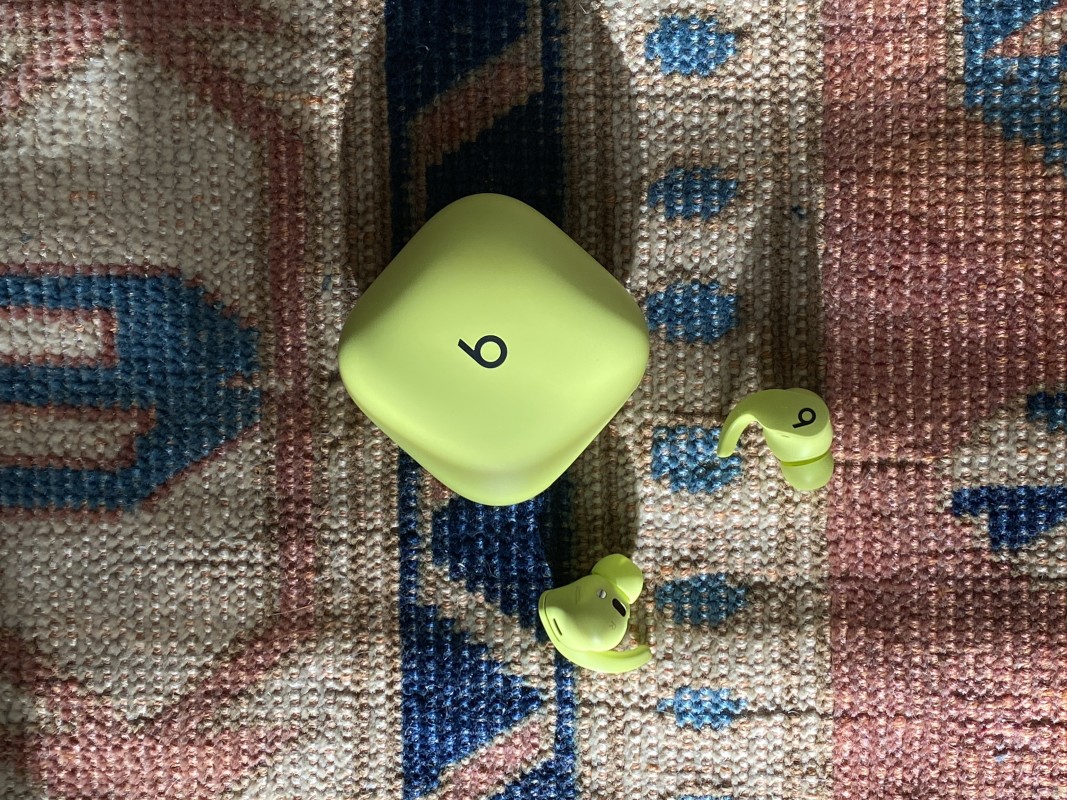
Tanner Bowden
Best Overall: Beats Fit Pro
- Pros: Comfortable, excellent audio quality, great connectivity
- Cons: Only minimum waterproofing
In Beats Fit Pro, the company's renowned audio quality is squeezed into a pair of tiny earbuds. They're great headphones, but what makes them the best wireless headphones for running is their fit, which balances comfort and security better than any other earbud we tested. Beats Fit Pro earbuds feel secure, but not like they're jammed in your ears. With an Apple H1 chip, they offer the same seamless pairing and features of AirPods, but they also work with Android. On both platforms, you can switch between high-quality active noise cancellation and transparency modes, depending on how you prefer to listen while you run.
| Type | Waterproofing | Battery Life | Audio Features | Price |
|---|---|---|---|---|
|
Earbuds with fin |
IPX4 |
6 hours plus 18 hours in case |
Active noise cancellation, spatial audio, transparency mode |
$200 |
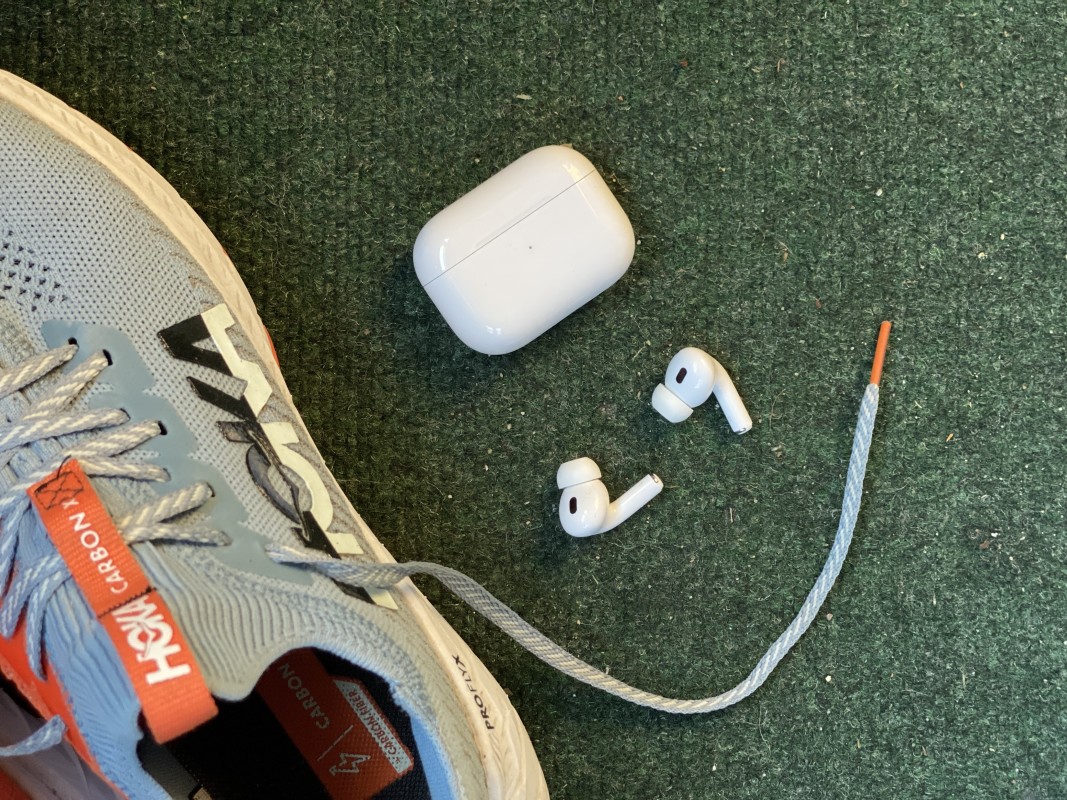
Tanner Bowden
Best AirPods: AirPods Pro
- Pros: Excellent audio quality, great connectivity, touch controls, small case, great for non-running activities, too
- Cons: Compatible with Apple products only
For many iPhone-owning runners, wireless Apple headphones come down to AirPods or AirPods Pro. Even though Apple AirPods 3rd Gen are IPX4 sweat-resistant (Apple Airpods 2nd Gen are not), AirPods Pro prove the best for running thanks to their gel cups that enhance the fit. For some, especially those who don't like gel cup earbuds, they still might be a little insecure during a jog (though we never had one pop out during testing). If they do work for your ears, they'll provide excellent sound quality for music and podcasts with easily adjustable noise canceling and transparency modes. Touch controls allow you to manage this along with track selection and volume, though it can be somewhat awkward while in motion. They work well for taking calls, too, which also makes them great everyday and work headphones. They also come with the smallest charging case of all the headphones we tested.
| Type | Waterproofing | Battery Life | Audio Features | Price |
|---|---|---|---|---|
|
Earbuds |
IPX4 |
6 hours plus 24 hours in case (listening only) |
Active noise cancellation, spatial audio, transparency mode |
$249 |
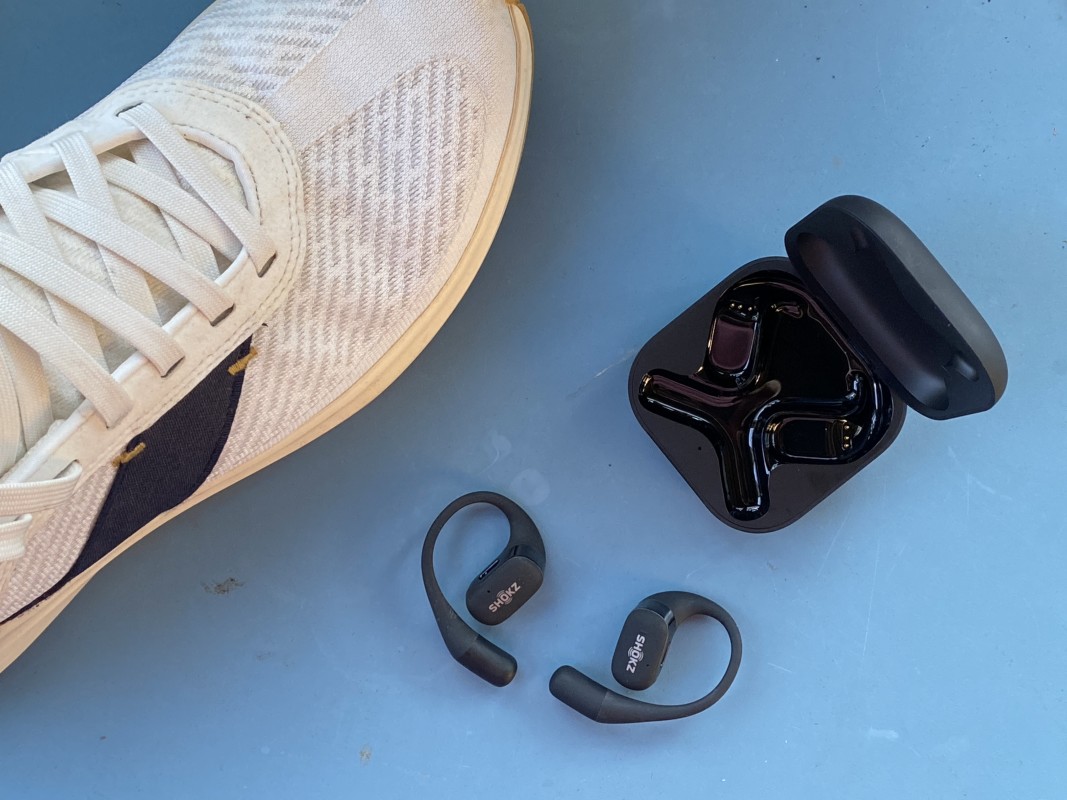
Tanner Bowden
Best Passive Fit Ear Wrap: Shokz OpenFit
- Pros: Comfy and secure, passive fit, solid audio quality
- Cons: Spotty touch controls
Even advocates of running without headphones might be turned by Shokz OpenFit, a pair of passive-fit headphones that use directional audio to get sound into your ears. With a full range of tones, that sound is on par in quality with the best non-passive earbuds, though you'll still experience wash-out while running in busy areas with traffic (which is, after all, the point of passive-fit headphones). Where OpenFit excels is in their fit, which uses an ear hook that seems to just barely cling to your ear but still manages to resist bouncing during runs. They're so comfortably unobtrusive that you might forget you're wearing them.
| Type | Waterproofing | Battery Life | Audio Features | Price |
|---|---|---|---|---|
|
Ear hook |
IP54 |
7 hours plus 21 hours in case |
Ambient noise cancellation for calls |
$180 |
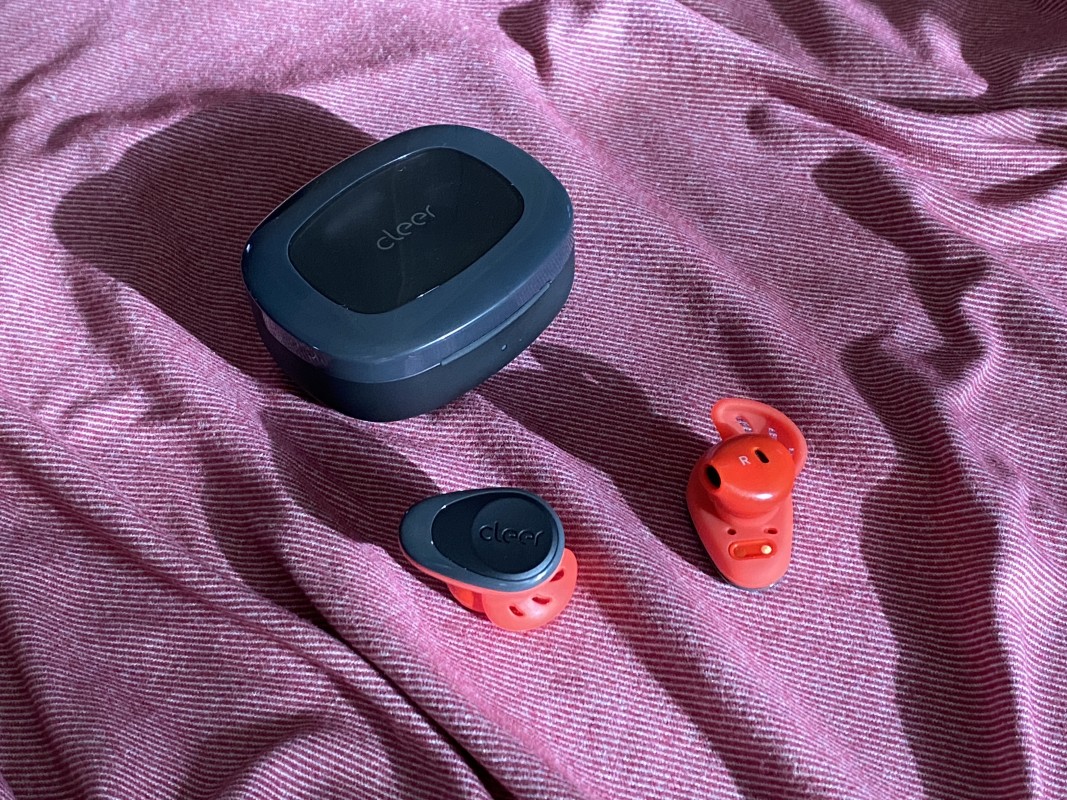
Tanner Bowden
Best Passive Fit Earbud: Cleer Goal
- Pros: Noninvasive earbud shape, quality passive audio
- Cons: Can be tricky to dial in the fit
If you can't stand hooks that wrap around the back of your ear but want running headphones that have a passive fit that lets in ambient noise, Cleer Goal are your best bet. Instead of a wrap, they use gel fins to hug the inside of your ear along with an old-school plastic bud that doesn't have a gel tip; they just sort of sit there. Goal is great at balancing music and ambient sounds, even when running alongside busy roads (though you still might miss some of your playlist or podcast when a truck goes by). Exterior touch controls plus quick, easy pairing and a small USB-C charging case make them convenient, too.
| Type | Waterproofing | Battery Life | Audio Features | Price |
|---|---|---|---|---|
|
Earbuds with fin |
IPX4 |
6 hours plus 14 hours in case |
N/A |
$100 |
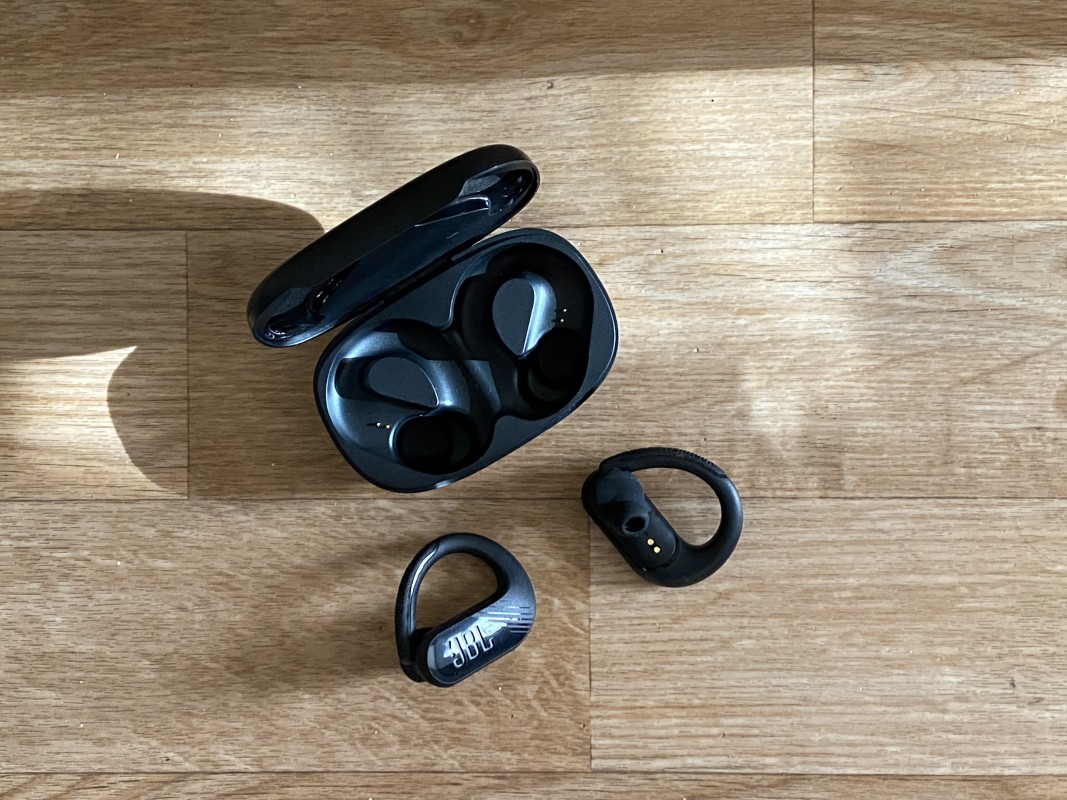
Tanner Bowden
Best Battery Life, Ear Hook: JBL Endurance Peak 3
- Pros: Adjustable transparency mode, affordable, high waterproofing
- Cons: Can be awkward to put on, case is big
If battery life is your top priority, JBL Endurance Peak 3 sport headphones are hard to beat with 10 hours of playback in the headphones and 40 more stored in the case. There's a lot more to like here though: a secure and comfortable ear hook design makes drop impossible, and an adaptive transparency mode that lets in some but not all ambient noise. The magnetic ear hooks make putting them on take some getting used to, and the case is larger than the other headphones on this list, but the sound quality is great, and when you do need to recharge, they use a now-universal USB-C cord.
| Type | Waterproofing | Battery Life | Audio Features | Price |
|---|---|---|---|---|
|
Ear hook |
IP68 |
10 hours plus 40 hours in case |
Ambient Aware transparency mode |
$100 |
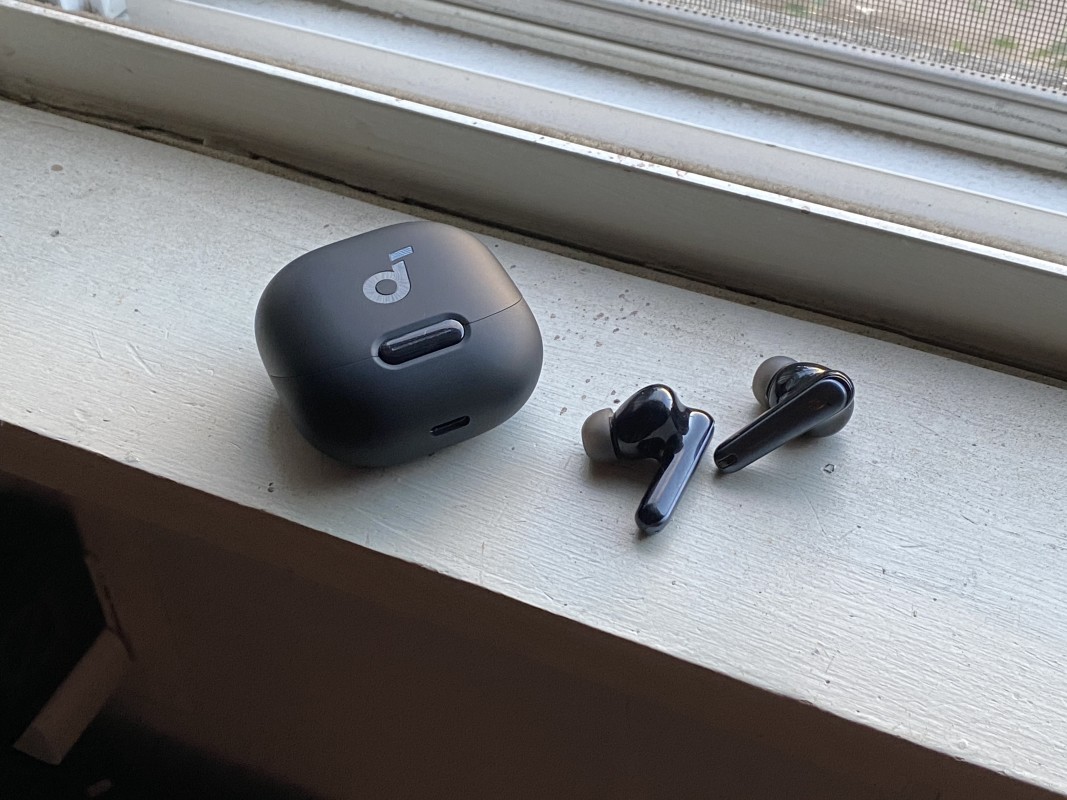
Tanner Bowden
Best Battery Life, Earbuds: Anker Soundcore Liberty 4 NC
- Pros: 50 hours battery life, affordable, comfy
- Cons: Only minimum water resistance
The recently released Anker Soundcore Liberty 4 NC earbuds boast all the features that are must-haves for high-end earbuds. Namely, noise cancellation and transparency modes. But they offer multiple modes for each one, allowing you to really fine tune how much you hear, which is nice if you plan to wear them for running in addition to work and travel. There's even an adjustable equalizer for audio customization, too, and they wouldn't be on this list if they didn't fit well during a run. The kicker is a whopping 50 hours of max battery life, and just 10 minutes in the pocket-size case will get four hours in a hurry, which should be plenty for a long run during marathon training.
| Type | Waterproofing | Battery Life | Audio Features | Price |
|---|---|---|---|---|
|
Earbuds |
IPX4 |
10 hours plus 40 hours in case |
Multi-mode adaptive noise cancellation and transparency mode, adjustable EQ |
$100 |
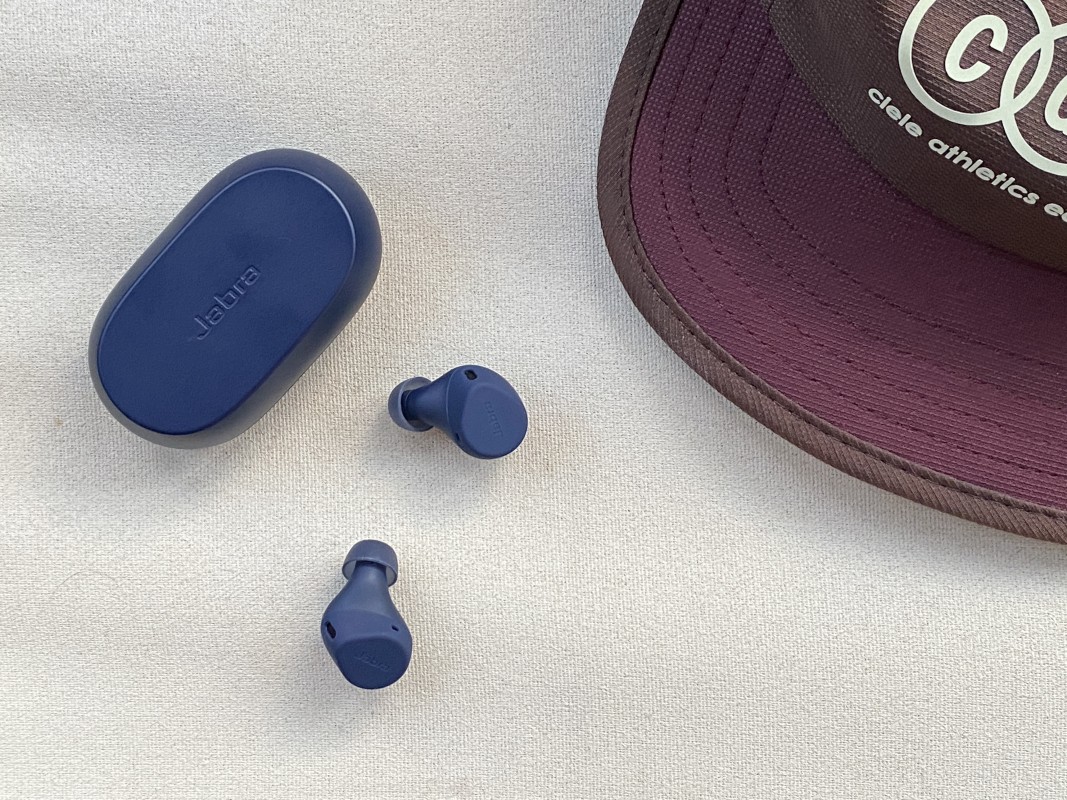
Tanner Bowden
Most Comfortable Earbuds: Jabra Elite 7 Active
- Pros: Snug fit, adjustable EQ settings, pocket-size case
- Cons: Shape might not work for all
Eschewing the popular stem-and-bud design many earbuds opt for, Jabra Elite 7 Active has a unique, ergonomic shape that contours with your ear. The shape produces the most comfortable fit of all the earbuds we tested. It's not just snug, it also feels secure, so you won't have to reach up every quarter mile to re-adjust. Their sound quality is excellent, too, whether you're listening to music or podcasts, and you can use an accompanying app to customize your EQ settings or receive software updates. For a cheaper earbud that's nearly as comfortable and has nearly all the same features, Jabra makes the $120 Elite 4 Active.
| Type | Waterproofing | Battery Life | Audio Features | Price |
|---|---|---|---|---|
|
Earbuds |
IP57 |
8 hours plus 22 hours in case |
Adjustable noise cancellation, transparency mode |
$180 |
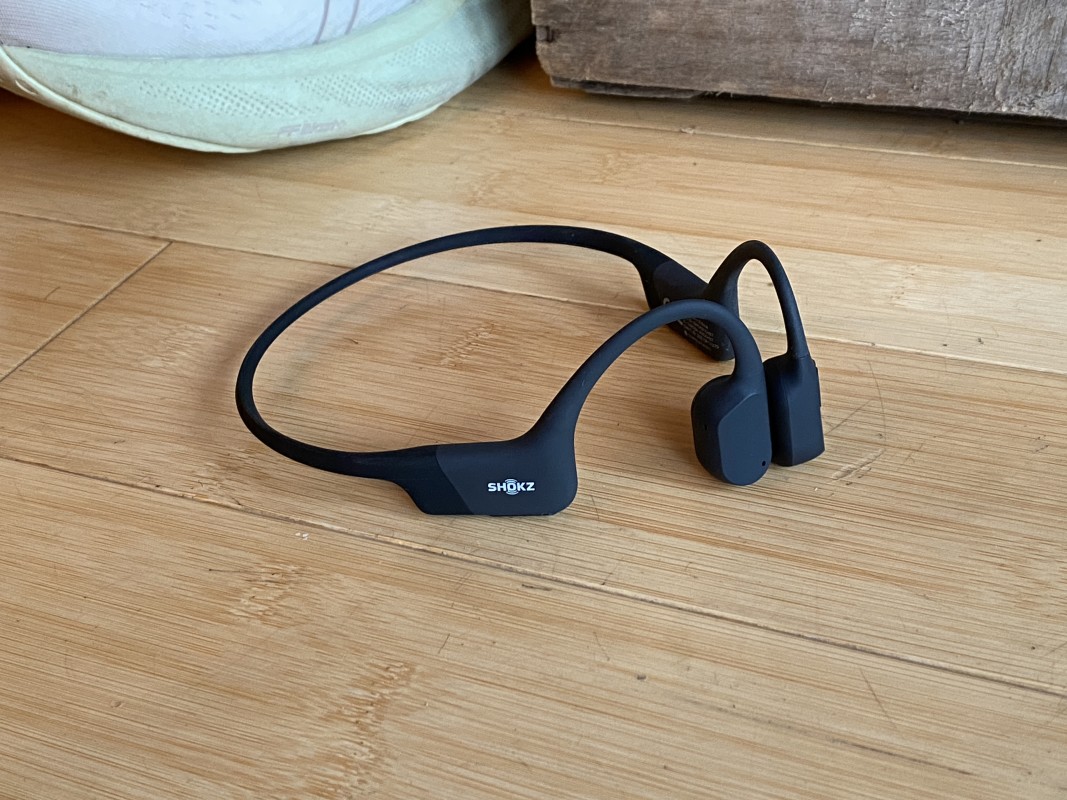
Tanner Bowden
Best Bone Conduction Headphones: Shokz OpenRun
- Pros: Ear is left entirely open, fit is secure and unnoticeable, exterior button controls
- Cons: Uses a unique charging cable, slightly tinny audio
Of all the passive-fit headphones we tested, none leave the ear as unobstructed as Shokz OpenRun, which use bone conduction to transmit sound vibrations to your inner ear via your cheekbones instead of the eardrum. The design allows for full awareness of ambient sounds around you, and a fit that's remarkably comfy and stands up to the bouncing of a run. Sound quality takes a small hit as a byproduct. Among Shokz headphones, OpenRun Pro has better audio, but is less waterproof and more expensive ($180). That said, runners who are consistently plagued by earbuds that pop out will love the wraparound fit.
| Type | Waterproofing | Battery Life | Audio Features | Price |
|---|---|---|---|---|
|
Wraparound passive-fit headphones |
IP67 |
8 hours |
N/A |
$130 |
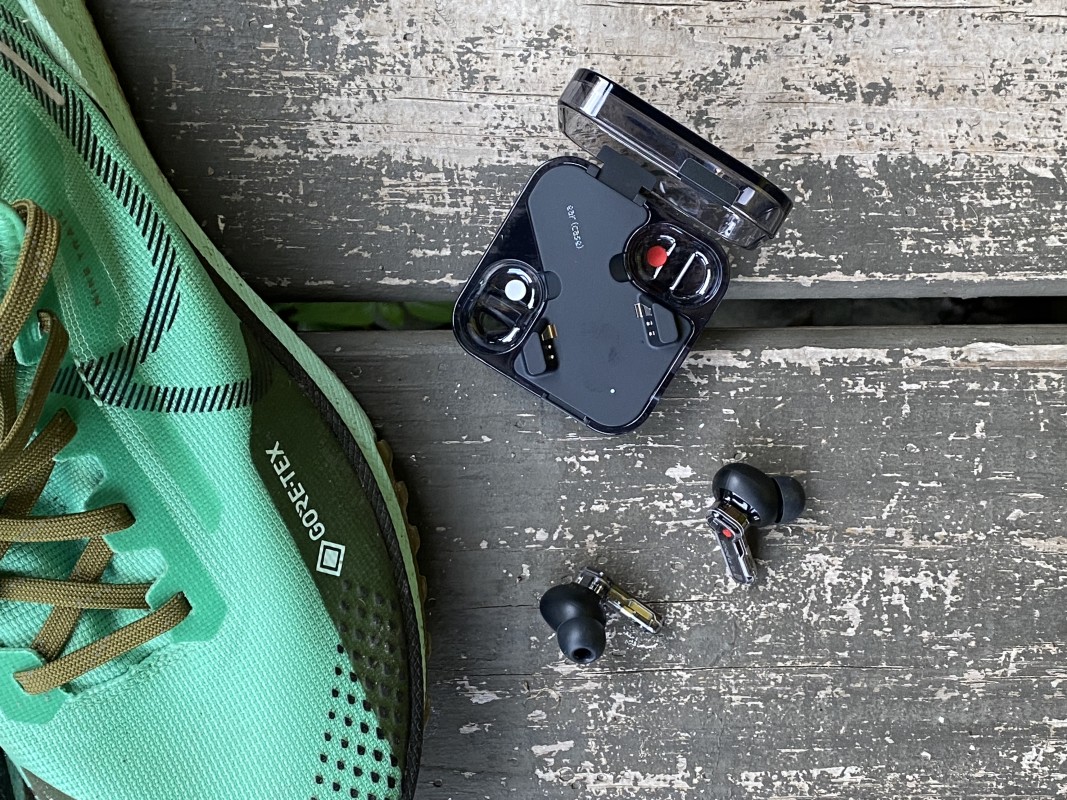
Tanner Bowden
Coolest Design: Nothing Ear 2
- Pros: Great audio, solid fit, responsive touch controls
- Cons: Only minimum water resistance
Nothing didn't design its Ear 2 earbuds specifically for sport, but with a suite of high-end audio controls and an IP55 waterproof rating, not to mention an undeniably cool see-through design, there's no reason not to put some miles on them. The headphones are equipped with noise cancellation that you can adjust or set to adaptive mode, and there's a transparency mode, too (though this mode transmitted a lot of wind into our ears while testing on a breezy afternoon, so it's better left 'off'). The earbuds stayed snug and didn't require mid-run adjustment, even while using the squeeze-to-engage stem controls. Compared to other premium noise-canceling earbuds, Nothing Ear 2 earbuds are relatively affordable, but they certainly don't sound that way.
| Type | Waterproofing | Battery Life | Audio Features | Price |
|---|---|---|---|---|
|
Earbuds |
IP54 (case is IP55) |
6 hours plus 30 hours in case |
Adaptive active noise cancellation, transparency mode, customizable EQ |
$149 |
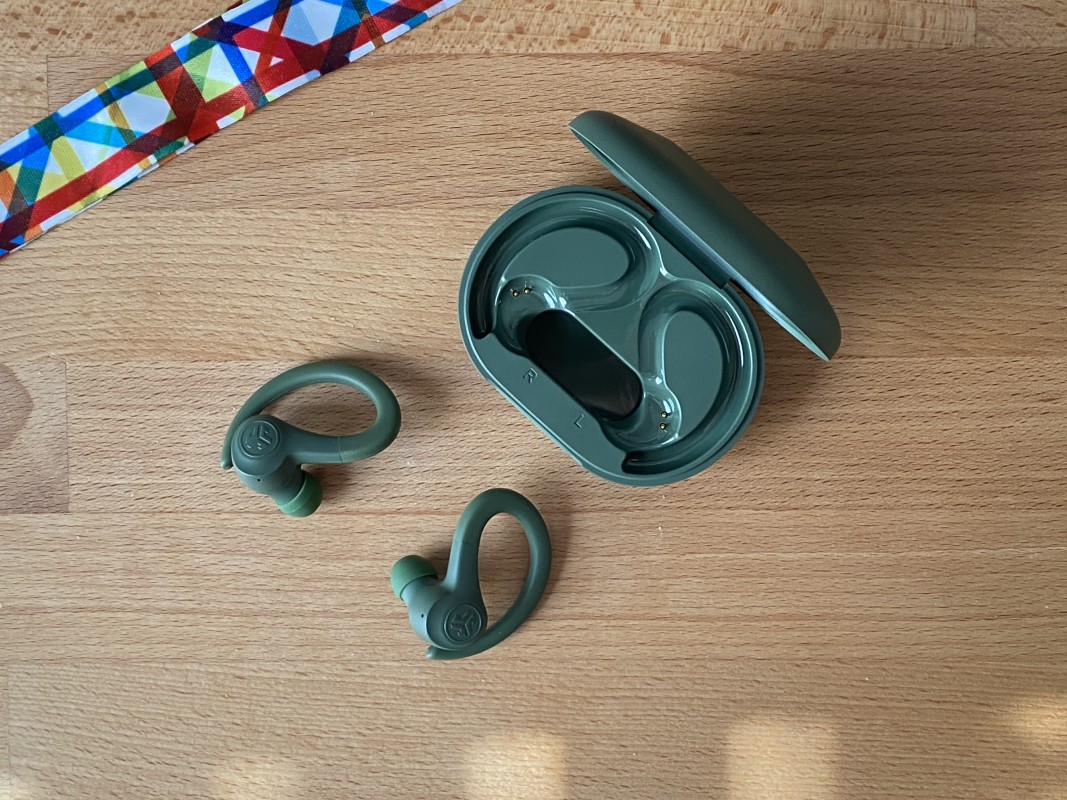
Tanner Bowden
Budget Pick: JLab Go Air Sport
- Pros: Affordable, comfortable, charging cable built into case, good waterproofing
- Cons: Case isn't waterproof
You can't assume much from $30 headphones, but exceeding low expectations isn't the only reason why JLab Go Air Sport earns a spot on this list. Of the things not to like here, most have to do with the case, which isn't waterproof (read: make sure your sweaty headphones dry completely before putting them back in!) and feels cheap compared to all the others we tested. On the plus side, it has a USB cable built-in. There's no noise cancellation or advanced audio features beyond some control over bass and treble levels, but the headphones sound good and fit securely, even during long runs. Their waterproofing is also a step above the sweatproof minimum. We probably wouldn't use them for dedicated listening or work calls, but they more than check the boxes for running.
| Type | Waterproofing | Battery Life | Audio Features | Price |
|---|---|---|---|---|
|
Ear hook earbuds |
IP55 |
8 hours plus 24 hours in case |
Adjustable EQ settings |
$30 |
Key Features in the Best Running Headphones
Waterproofing
Even if you never plan to even think about running in the lightest of drizzles, waterproofing is a must-have feature for running headphones. The reason: sweat. Many early-generation AirPods owners have found this out the hard way (and the latest third-gen model is now sweat-resistant as a result). This goes for all headphones though—with time and regular use, even small amounts of sweat can work their way into the electronics and cause issues.
Any headphones you plan to run in should come with an ingress protection (IP) rating of IPX4 (i.e. sweatproof) or greater, and at least IPX5 if you want to run in the rain. You might also come across a rating listed with two numbers, such as IP54, where the first number denotes the headphones have been tested for protection from solids, like dust, too. All the headphones in this guide are at a minimum sweatproof (IPX4).
Related: The Reluctant Runner's Guide to Running
Noise Cancellation and Ambient Sound Transparency
In the past, noise cancellation only came in large over-ear headphones. Now, it's a relatively common feature in earbuds and is included in many of the best headphones for running. Many—but not all headphones with noise cancellation—also feature a transparency mode where the headphones electronically permit ambient noise to pass through into your audio.
The existence of this tech is a hint at the primary pro-con with noise cancellation: safety. While it's nice to be completely immersed in music or a podcast, it's generally advisable to maintain an awareness of what's going on around you wherever you're running so you don't step in front of a cyclist passing "ON YOUR LEFT!" (or worse).
In contrast to noise-canceling headphones are open-ear or passive-fit headphones, which let in ambient noise by nature of a design that neither enters nor covers the ear canal. These headphones sacrifice some audio quality but are the safest you can get without ditching music entirely.
Related: Best Running Workouts to Increase Speed and Endurance
Fit
Every ear is different. For some, those little gel cups just don't cut it. Once you start pounding the pavement, an ill-fitting bud is bound to bite the dust. Alternatively, you can don earbuds that boast arms that wrap around and behind your ears, or small fins that grip the inside of your ears. The best option is a matter of personal preference.
Audio Quality
Without going too deep into headphone technology—drivers, amplifiers, etc.—it's worth considering audio quality when choosing a pair of running headphones. Higher-quality headphones are almost always more expensive, but if you plan to use the same headphones for running as you do listening to music during your commute, on an airplane, or while working, you might prioritize audio quality more. This applies to audio input too; if you plan to use the headphones for calls, you'll want a pair with a decent microphone and voice-isolation tech.
from Men's Journal https://ift.tt/qNPCAJi


0 comments